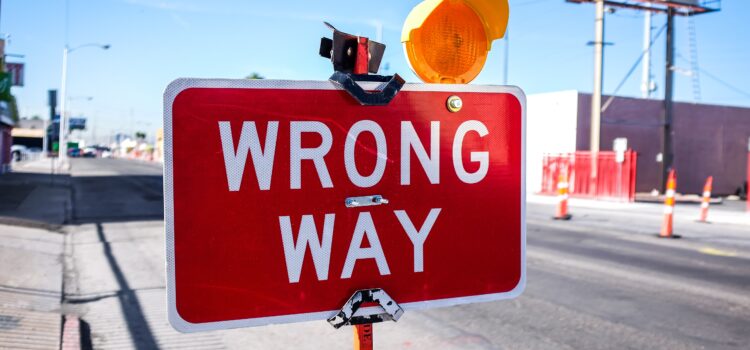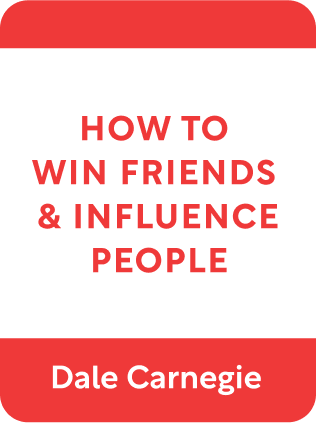

This article is an excerpt from the Shortform book guide to "How to Win Friends and Influence People" by Dale Carnegie. Shortform has the world's best summaries and analyses of books you should be reading.
Like this article? Sign up for a free trial here .
What are the benefits of admitting you’re wrong? And why is it so difficult?
Admitting you’re wrong is one of the hardest things you can do in a conversation. But it’s also an important part of good communication.
Read more about admitting you’re wrong and when you should do it.
Admitting You’re Wrong
Admitting you’re wrong can be difficult, but is an important part of good communication skills.
Here are steps you can take to admit you’re wrong, and when to do it.
1. Show respect for the other person’s opinions. Never say, ‘You’re Wrong.’ (Instead, admit that you might be the one who’s wrong.)
Admitting you’re wrong can be hard, but resist the urge to accuse others. Instead, think about how you might be the problem.
- When attacked for being wrong, people will turtle up and defend their opinion to the death. They will lose sight of the main point, hoping to find small exceptions when their assertion is true.
- “We are incredibly heedless in the formation of our beliefs, but find ourselves filled with an illicit passion for them when anyone proposes to rob us of their companionship.”
- Instead, approach with an open-minded view: “I may be wrong. I frequently am. And if I’m wrong, I want to be put right. Let’s examine the facts.”
- Permit yourself to understand the other person. Your first reaction is to judge. ALLOW yourself to understand what the other person believes.
- This opens the bridge to letting your partner consider how she may be wrong.
- Strategically, this might actually switch the ego from being right to who can be most humble, gracious, and open-minded. No one wants to be outdone, so you change the rules of the game.
- Tactics
- For an angry customer, let them know that your company sometimes makes mistakes and you want to hear more about their situation.
- Remove these dogmatic words from your vocabulary: “Certainly,” “of course,” “undoubtedly.”
- Instead, say “I imagine,” “It appears to me.”
- Ask people where they feel the problems are. Ask for their opinions on how best to proceed. They may naturally convince themselves of your solution.
- Examples
- An engineering supervisor presented to management her new system of running yarn, highlighting how it was superior and how she had all the answers they needed. It failed – management wasn’t given a way to admit their current system’s failures and they became defensive. In the next session, she asked what their problems were and for their opinions on how to fix it. This paved the way for her solution.
- A lumber salesman was having his company’s pieces rejected by a quality inspector, who was unfamiliar with the white pine under concern. Instead of castigating the inspector for ignoring standard guidelines, the salesman asked questions about why each rejected piece was unsatisfactory, under the guise of figuring out how to deliver better shipments in the future. The inspector’s attitude changed, now being forced to consider the rejection criteria and realizing he didn’t have the full expertise to judge the pieces. The salesman insisted that while the pieces might be within standard code, if the inspector felt it was unsuitable, they would gladly have it rejected. The inspector began feeling guilty about rejecting any piece, and ultimately realized their company was at fault for not having specified the correct quality grade.
2. If you are wrong, admit it quickly and emphatically.
Admitting you’re wrong should be done as soon as you realize you’ve made a mistake or an error in judgement. Here’s why.
- So many people instinctively fight for their right of way that admitting your error is disarming. Few people want to kick someone who’s already down – they may in fact jump to your defense and build you back up.
- When a person’s importance is acknowledged, she can build her ego further only by showing mercy.
- [Furthermore, much of the battle in an argument is making sure the other person recognizes her fault – which is why defensiveness provokes further ire. Once contrition is clear, repair can begin.]
- Say about yourself all the derogatory things the other person is thinking. A forgiving attitude will come and your mistakes will be minimized.
- Tactics
- If making a mistake at work, admit it quickly without making excuses. Your colleagues may jump to your defense, minimizing the impact of your mistake.
- Get over the pride that the other person should yield first and admit her mistake. The other person is feeling the same way. If you care about results, then admit your mistake first.
- If someone criticizes your work, be gracious. “To be honest, I don’t entirely agree with it myself. Not everything I write yesterday appeals to me today. I’m glad to learn what you think about this.”
- Examples
- Dale Carnegie was reprimanded by a policeman for not having his dog on a leash, and while Dale demurred about what the harm would be, the policeman became more aggressive. The next time he saw the policeman, he admitted, “I’m guilty. I have no excuses. You warned me that if I did this again you would fine me.” The policeman softened – already having his importance acknowledged, he could show his importance further only by showing mercy.
Admitting you’re wrong isn’t easy, but you need to do it in order to ensure positive communication and conversations.

———End of Preview———
Like what you just read? Read the rest of the world's best book summary and analysis of Dale Carnegie's "How to Win Friends and Influence People" at Shortform .
Here's what you'll find in our full How to Win Friends and Influence People summary :
- The 6 ways to make people like you
- How you can give feedback to others and improve their behavior
- An essential checklist for handling arguments in a productive way






